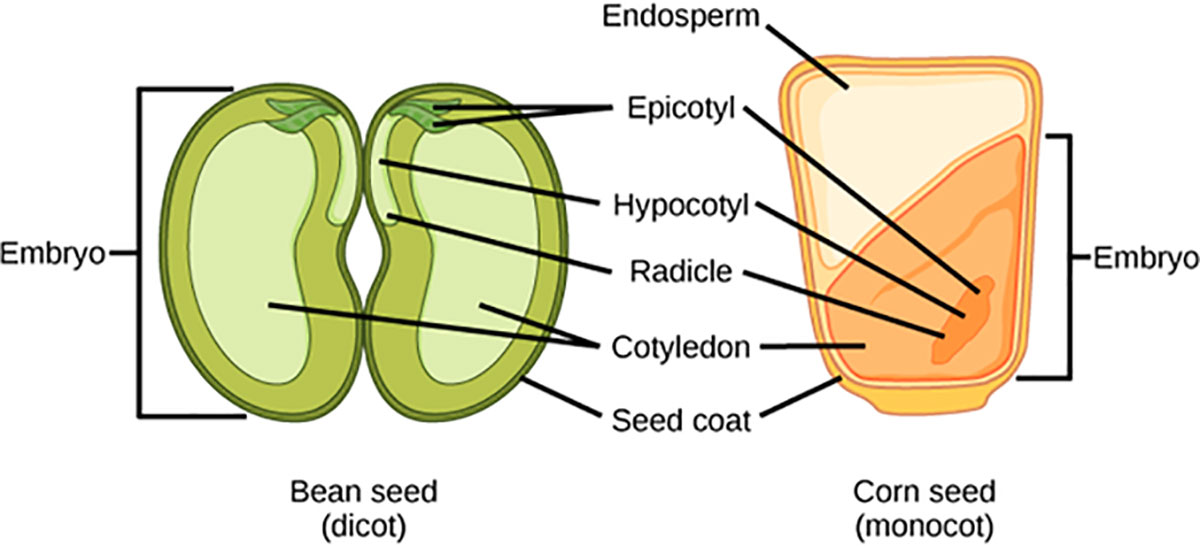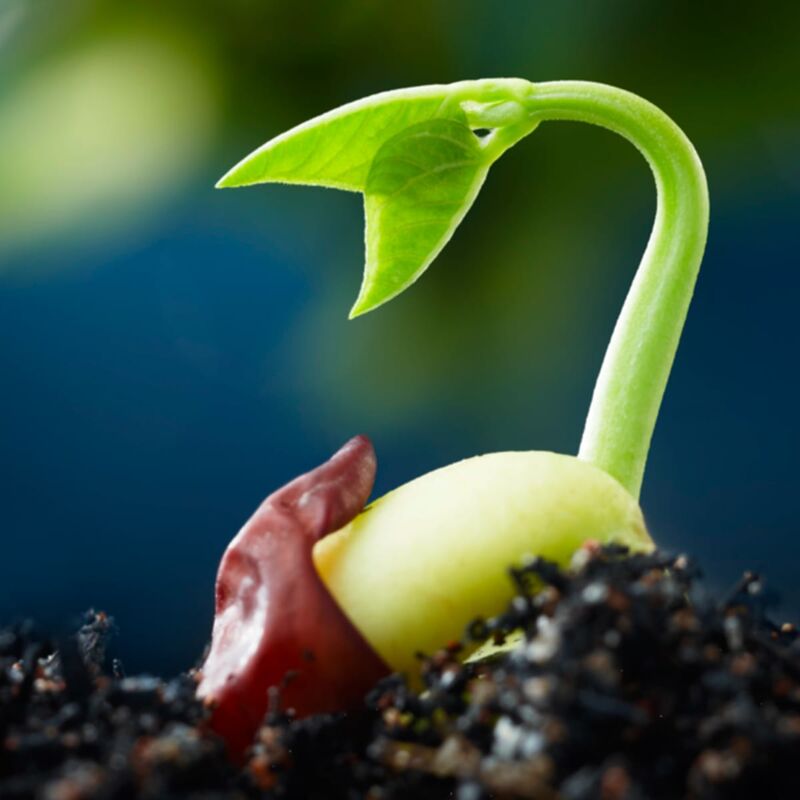Germination
Germination is the process of a seed developing into a plant that will produce more seeds.
- The embryo that contains the embryonic root (radical), embryonic stem (epicotyl and hypocotyl),
- One or two seed leaves (cotyledons),
- The endosperm, comprised of starch packed around the embryo, is converted to energy to drive the growth from seed to a seedling during germination.
- A seed coat of varying thicknesses protects the embryo from parasites, injury, or extreme temperatures.

Germination Triggers
Dormant seeds need water, oxygen, and the proper temperature to begin the process of germination. Until seeds get all three of these conditions, they remain dormant. Water triggers germination to start and is needed throughout the germination process. However, soil should be moist but not saturated with water. Some seeds require more water than others and have a critical soil moisture level.
The soil temperature must be warm enough so seeds can germinate but not so hot to damage the embryo. Cold soil temperatures can cause seeds to remain dormant, increasing their vulnerability to diseases and insect damage.
Temperature Requirements Vary Between Species
When a seed is exposed to the proper conditions, water and oxygen are absorbed through the seed coat and cause the embryo cells to enlarge. If there is not enough oxygen present, germination may not occur. The most common reason for lack of oxygen is too much water due to over-watering or flooding.
Imbibition
The first stage of germination, called imbibition, occurs when the seed is exposed to water which is absorbed water through its seed coat which softens it. The absorbed water activates the metabolic functions needed for germination and growth, and the seed begins to convert starch to sugar, providing energy for the embryo during germination.
The softened seed coats increase permeability which allows the seeds to absorb nutrients from soil fungi. However, because these seeds have limited viability, the inside embryo will die without a fast connection between the soil fungi and seed, a process made possible by water. After absorbing enough water, the embryo grows too large for the seed and bursts the outer shell; a small plant emerges.
More water is then absorbed, and the seed's cells start to elongate and divide. The radicle or primary root is usually the first part of the embryo to break through the seed coat. It grows downwards to anchor the seed in place and absorb water and nutrients from the soil. Next, the shoot and seed leaves emerge from the seed coat. Soon the shoot will emerge from the soil. The seed tissue will diminish as the plant's roots, stems, and leaves develop.

Most seeds do not require light for germination and germinate best in dark conditions Some seeds like carrots & some lettuce varieties need light to germinate. The stimulus of light causes them to break dormancy and start germination once exposed to water and proper warmth. These seeds germinate best when planted on the soil surface or just barely covered with soil.
Although it may be tempting to plant seeds shallowly, it is essential to follow the recommended planting depth, so they emerge sooner. Planting too shallow can result in insufficient soil moisture for germination or a weak root system. On the other hand, planting seeds too deeply causes them to use all of their stored energy before reaching the soil surface.
Like temperature and moisture, ideal planting depth varies by plant species. As a general rule of thumb, larger seeds can be planted deeper because they contain more stored energy to reach the soil surface than smaller seeds.